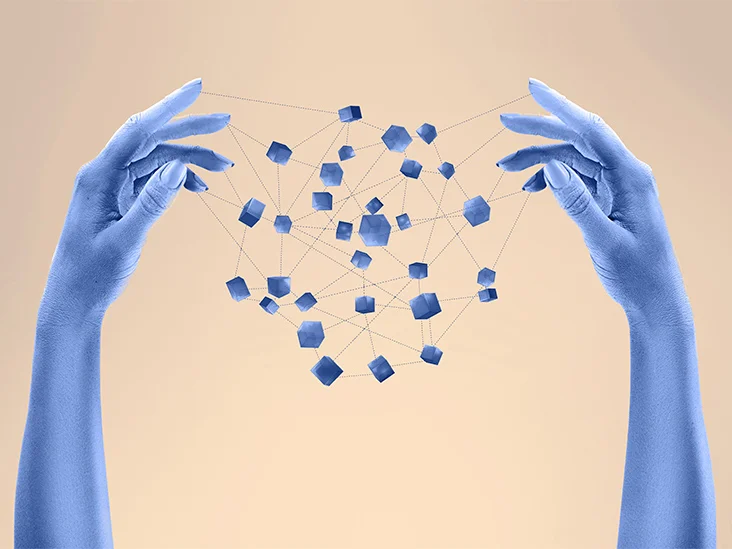Dissociative Identity Disorder (DID), previously known as Multiple Personality Disorder, is a complex and often misunderstood mental health condition. DID can have a profound impact on an individual’s life, leading to significant challenges in areas such as work, relationships, and daily functioning. To increase awareness and understanding of this condition, Dissociative Identity Disorder Awareness Day is observed annually on March 5th. In this article, we will explore the history, symptoms, causes, treatment options, and the importance of spreading awareness and understanding of DID.
What is Dissociative Identity Disorder (DID)?
DID is a dissociative disorder characterized by the presence of two or more distinct personality states or identities. These identities, also referred to as alters, can have unique names, behaviors, attitudes, memories, and even physical characteristics. Individuals with DID often experience memory gaps, amnesia, and time loss, which can make it difficult to function effectively in daily life.
History and Controversies Surrounding DID
DID has a long and controversial history, with some experts debating the validity of the disorder. Despite the skepticism, DID is recognized in the DSM-5 (Diagnostic and Statistical Manual of Mental Disorders, Fifth Edition) and is widely accepted by mental health professionals as a legitimate disorder. The controversy surrounding DID is partly due to its rarity and complex presentation, which can make it challenging to diagnose accurately.
Symptoms and Diagnosis of DID
The symptoms of DID can vary widely between individuals and can be challenging to detect. However, some common symptoms include memory gaps, dissociative amnesia, and the presence of multiple identities or alters. To diagnose DID, mental health professionals use diagnostic criteria outlined in the DSM-5, which requires the presence of two or more distinct identities or personality states, recurrent gaps in recall of events, and significant impairment in daily functioning.
Causes of DID
The exact cause of DID is still unknown, but several factors are believed to contribute to its development. Trauma, particularly in childhood, is a significant risk factor for DID. Other factors that may increase the risk of developing DID include neglect, abuse, and living in a stressful or unpredictable environment.
Treatment Options for DID
Effective treatment for DID typically involves long-term therapy and may include a combination of approaches such as cognitive-behavioral therapy, trauma-focused therapy, and medication management. The goal of treatment is to improve an individual’s daily functioning, reduce symptoms, and increase overall well-being. Treatment may also involve developing coping strategies and addressing any comorbid mental health conditions.
Living with DID: Coping Strategies and Support
Living with DID can be challenging, but there are strategies that can help individuals manage their symptoms and improve their quality of life. These include developing a strong support system, practicing self-care, and identifying triggers and coping strategies.
Myths and Misconceptions about DID
Despite the increasing awareness of DID, many myths and misconceptions still surround this condition. One common misconception is that individuals with DID are faking or seeking attention. However, research has shown that DID is a genuine disorder that can cause significant distress and impairment in daily life. Another common myth is that individuals with DID are dangerous or violent. However, studies have shown that individuals with DID are no more likely to engage in violent behavior than the general population.
Stigma and Discrimination Towards People with DID
Stigma and discrimination towards individuals with DID can be a significant barrier to treatment and recovery. Individuals with DID may face stigma and discrimination from healthcare providers, employers, and even friends and family members. This can lead to feelings of shame, isolation, and can further exacerbate symptoms of the disorder.
Celebrating Dissociative Identity Disorder Awareness Day
Dissociative Identity Disorder Awareness Day is an opportunity to increase understanding and awareness of DID and to challenge the stigma and discrimination faced by individuals with this condition. The day is also an opportunity to celebrate the resilience and strength of individuals living with DID.
The Importance of Spreading Awareness and Understanding
Increasing awareness and understanding of DID is essential to reduce stigma, promote early detection and diagnosis, and improve access to treatment and support for individuals living with the disorder. By educating ourselves and others about DID, we can help create a more inclusive and supportive society for individuals with this condition.
Conclusion
Dissociative Identity Disorder is a complex and often misunderstood mental health condition that can have a significant impact on an individual’s life. By increasing awareness and understanding of this condition, we can help reduce stigma, promote early detection and diagnosis, and improve access to treatment and support for individuals living with the disorder. Dissociative Identity Disorder Awareness Day is an opportunity to celebrate the resilience and strength of individuals with DID and to promote a more inclusive and supportive society.
FAQs
1. How can I support individuals with DID on this awareness day?
There are many ways you can support individuals with DID on this awareness day. You can share information and resources about DID on social media, participate in local events or fundraisers, and educate yourself about the challenges faced by individuals with this condition.
2. What are some common triggers for individuals with DID?
Common triggers for individuals with DID can include reminders of past trauma, stress, and anxiety, certain sounds, smells, or situations that are reminiscent of past traumatic experiences.
3. Can DID be cured or treated completely?
While there is no known cure for DID, effective treatment can help individuals manage their symptoms, improve their daily functioning, and increase their overall well-being.
4. Is it safe to use hypnotherapy to treat DID?
There is limited evidence to support the use of hypnotherapy for the treatment of DID. Some individuals may find it helpful, while others may find it triggering. It is essential to work with a qualified mental health professional to determine the most appropriate treatment options for each individual.
5. Can children develop DID?
While DID is rare in children, it is possible for children to develop this condition following traumatic experiences. It is essential to seek early intervention and treatment for children who may be experiencing symptoms of dissociation.
